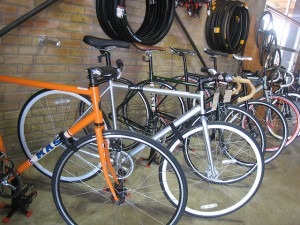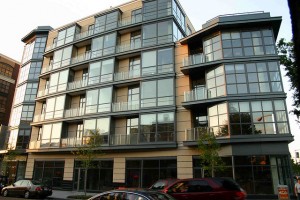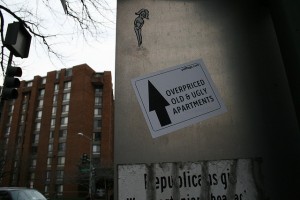As D.C.’s racial makeup is changing, racially-charged rhetoric can end up being used in the typical neighborhood squabbles that happen in many communities. The latest example came across the Brookland neighborhood Listserv, in which an ANC commissioner accused a few people of using the forum to “virtually lynch” a family who have taken years to complete a large home renovation. The family is black and started the work in 2007. The complaining neighbors are white and have raised questions over the Listserv about the size of the project and its documentation, among other concerns.

Nicholas Kamm/AFP/Getty Images
A woman checking her email.
Department of Consumer and Regulatory Affairs director Nicholas Majett wrote an email on the Listerv in January explaining the property had three years’ worth of allegations of illegal building, but that most of the allegations were unsubstantiated. A few citations had been issued and he added that his office was looking into new complaints brought by neighbors.
ANC Commissioner Vaughn Bennett writes in an email to DCentric that he has no regrets with his characterization of situation as a “lynching:”
In the same vein as claiming that a black man whistled at a white woman, the rallying call is that a black man is building a house in violation of the law (which he is not), resulting in the unwarranted outrage and attacks from those hidden behind computer screens.
Consider, how many other houses are being built, (from the ground up), by black men, (or black women), in our neighborhood? How many other homes and homeowners have come under such a sustained “virtual” attack? None. Not even the house under construction in the 1200 block of Evarts where a worker was recently killed by being buried under a collapse of mud.
The Evarts house also had proper work permits, but nonetheless, Bennett writes, “[I] am fully confident that what I said correctly summarized the circumstance and situation. My use of the term ‘virtually lynch’ was not done without due diligence and forethought.” Additionally, one of the homeowners had previously posted an email on the Listserv, writing they are “very tired of people that are neighbors constantly harassing my family on this [Listserv].”
The term “lynching” conjures up images of a tragic history in which black men were killed by white mobs in acts of vigilante justice. One volunteer moderator took down Bennett’s post, asking whether it was necessary to use the term “‘lynching’ whenever two people of different races have a legitimate disagreement. Surely this use of the language cheapens what happened to the people who were actually lynched.”
Continue reading →









